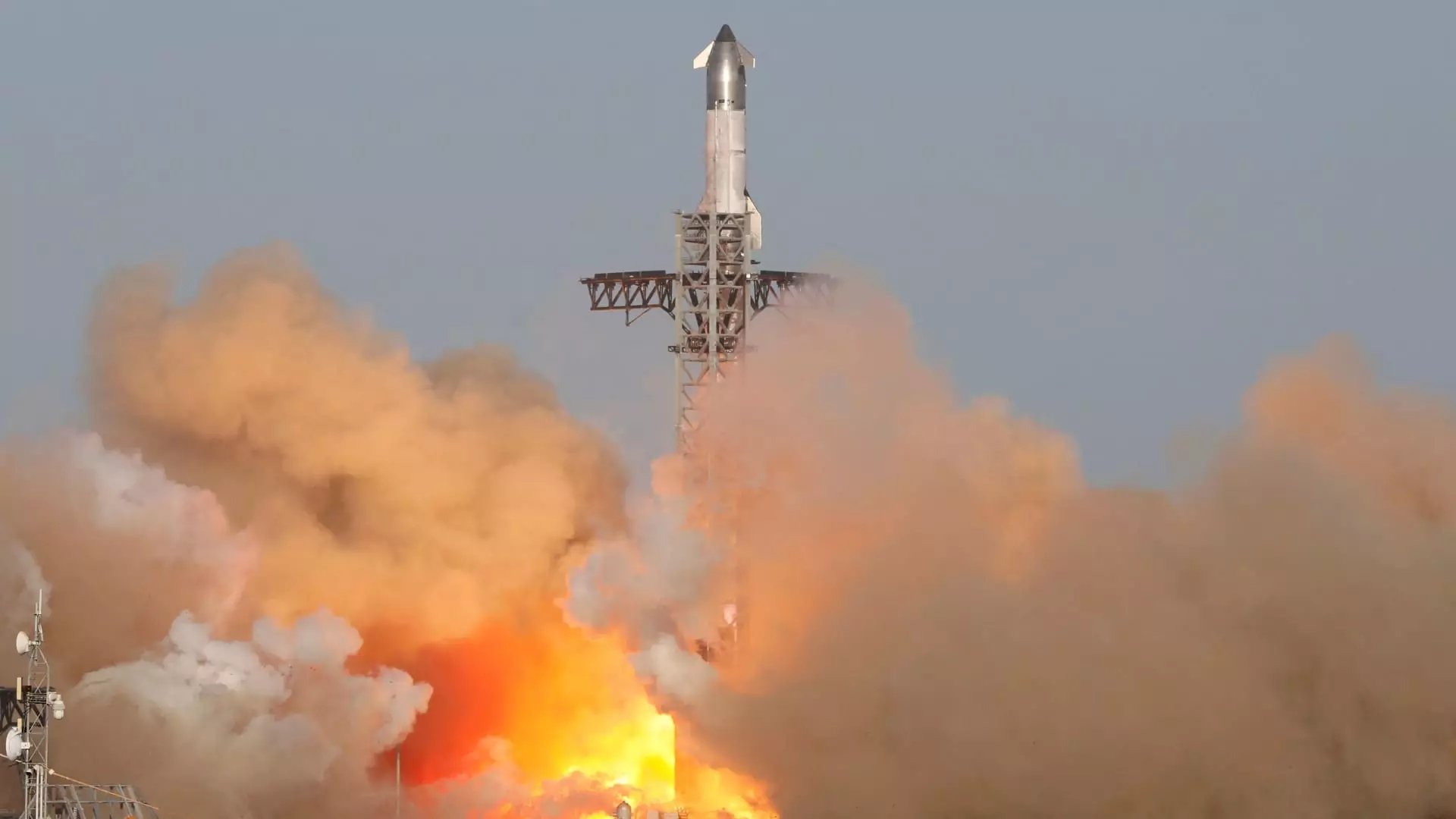The recent disruption in air travel due to SpaceX’s Starship flight test mishap is a troubling reminder of the precarious balance between innovation and safety in the aerospace industry. Not only did this incident ground flights at major Florida airports, including Miami International and Fort Lauderdale, but it also raised significant concerns regarding regulatory oversight and operational responsibility. The idea that a test flight can wreak havoc on civilian airspace, inconveniencing thousands, is a stark wake-up call. When powerful private entities, like SpaceX, venture into realms traditionally governed by strict regulations, we must scrutinize their authority and degree of accountability more rigorously.
What ought to be more concerning is the Federal Aviation Administration (FAA)’s reactive role in these situations. This latest mishap saw the FAA mandating SpaceX to conduct another investigation, but why was the company allowed to proceed with this flight test without addressing issues from prior incidents? Conceding to the allure of space exploration while sidelining the legitimate concerns of operational safety for commercial airlines should not be the standard practice. This ongoing pattern could lead to crippling consequences for the aviation industry as a whole.
The Chaos of Commercial Aviation and Space Operations
The intersection of commercial aviation and space travel presents a paradox: innovation and modernization in space technology can potentially undermine established air travel infrastructure. SpaceX’s ambitions to dominate space travel should not compromise the security or efficiency of existing commercial airlines. There are multiple stakeholders involved in the region’s airspace: private planes, commercial airlines, and of course, state and federal regulations must harmonize to ensure the safety of thousands of daily passengers.
However, SpaceX’s frequent flight tests seem to prioritize its vision over public safety. The need to accommodate countless flights regularly must outweigh the urgency for SpaceX to test its latest rocket, especially when the latter has a history of mishaps. This disregard for shared airspace raises essential ethical questions. Shouldn’t the greater good take precedence over corporate ambition?
The Elon Musk Factor: Ambition vs. Responsibility
Elon Musk is undoubtedly a visionary; he propels humanity forward in ways few others can. However, his broader influence on agencies like the FAA has become a focal point of distraction from important safety protocols. As a senior advisor to former President Trump, Musk’s entanglements suggest a concerning overlap between government oversight and corporate ambition. Such conflicts can compromise regulatory effectiveness. Should we trust Musk’s enterprises to self-regulate while they are testing technologies that affect civilian safety?
Critics rightly point out that the ability of a private corporation to direct its innovative paths unencumbered by stringent oversight could lead to severe repercussions. After all, numerous prior incidents have laid bare the fact that public safety must be paramount in any aerospace operation. The FAA has a responsibility, not just to monitor, but to prioritize the integrity of airspace for all users, which seems compromised in this current regulatory landscape.
What Lies Ahead for SpaceX, the FAA, and Public Safety?
As SpaceX continues to lap up accolades for its ambitious endeavors, the reality on the ground should provoke serious contemplation. Are we truly willing to exchange safety for corporate advancement? The FAA needs to rethink its operational fortitude and reassess how it navigates relationships with powerful tech moguls like Musk. It’s imperative that a new standard be established whereby ingenuity does not outpace responsibility and risk management.
The public deserves assurance that lives aren’t gambled for the sake of cutting-edge technology. With increasing incidents of debris raining down and flights being disrupted, our confidence in safety regulation methods erodes. As we look towards a future where space tourism and technological advancements are expected norms, it becomes increasingly essential for regulatory frameworks to adapt and evolve. The integrity of both the aerospace and aviation industries rests on maintaining a delicate equilibrium between pioneering ambition and steadfast responsibility.

